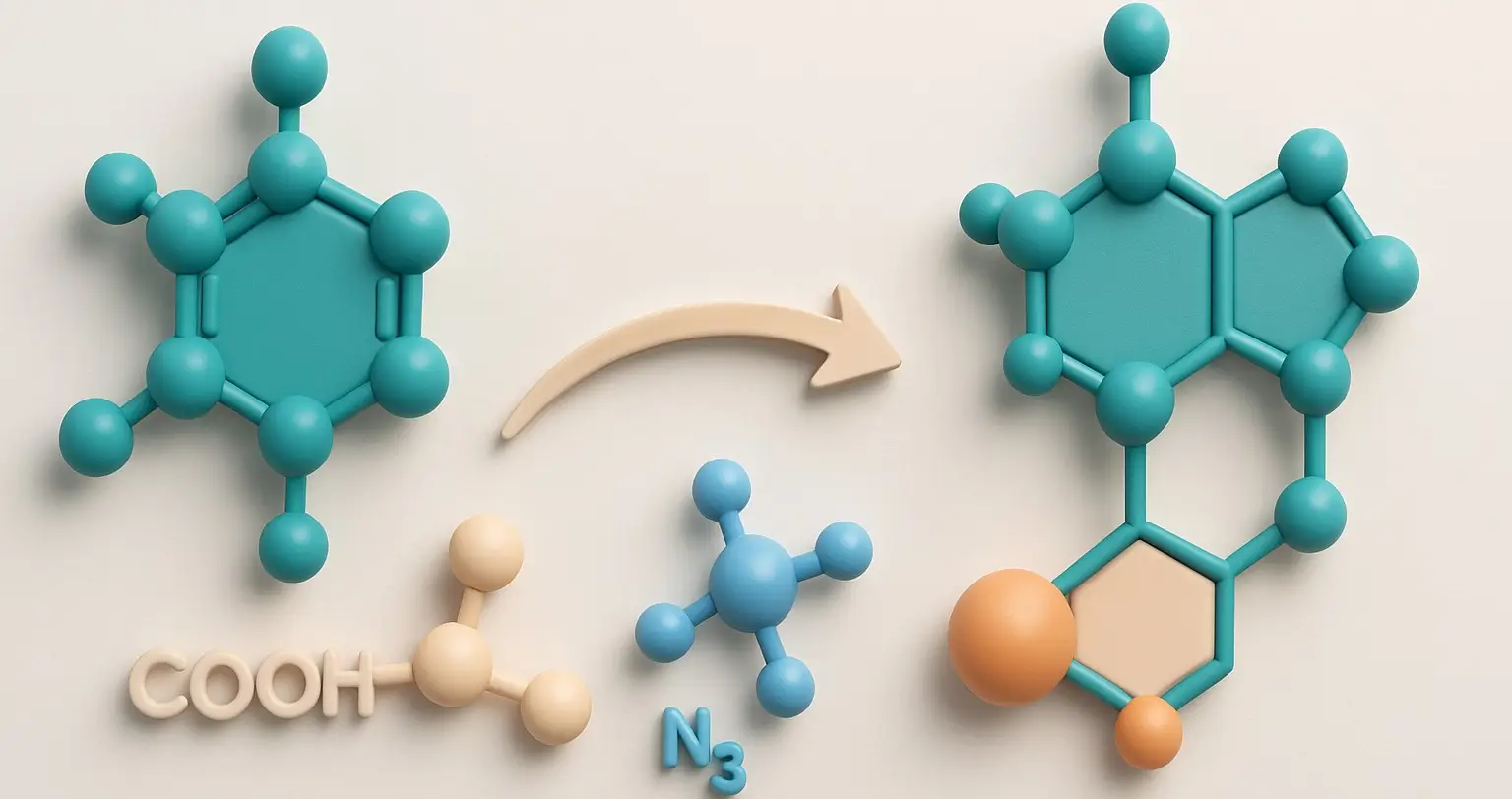- Biosynthesis of Purine Nucleotide refers to the cellular process by which purine nucleotides primarily adenosine monophosphate (AMP) and guanosine monophosphate (GMP) are synthesized from small molecular precursors.
- Biosynthesis of Purine Nucleotide pathway involves the stepwise construction of the purine ring directly onto a ribose sugar molecule (from PRPP: 5-phosphoribosyl-1-pyrophosphate), utilizing amino acids (like glycine, glutamine, and aspartate), formyl groups (from N¹⁰-formyl-THF), and carbon dioxide.

De Novo Purine Synthesis Pathway
- The de novo synthesis of purines starts with simple molecules like amino acids, carbon dioxide, and tetrahydrofolate.
- The pathway is a stepwise construction of the purine ring attached to ribose-5-phosphate.
- Here’s an outline of the main steps:
-
Formation of PRPP:
- Ribose-5-phosphate is converted to 5-phosphoribosyl-1-pyrophosphate (PRPP) by the enzyme PRPP synthetase.
- Reaction: Ribose-5-phosphate + ATP → PRPP + AMP
-
Commitment Step of Biosynthesis:
- PRPP reacts with glutamine to form 5-phosphoribosylamine. This is catalyzed by amidophosphoribosyltransferase.
- Reaction: PRPP + Glutamine → 5-Phosphoribosylamine + Glutamate + PPi
-
Formation of Inosine Monophosphate (IMP):
- Through a series of steps involving the incorporation of atoms from glycine, formate (from N10-formyl-tetrahydrofolate), glutamine, aspartate, and CO₂, the molecule is converted into IMP.
- Notable intermediates: Glycinamide ribonucleotide (GAR), Formylglycinamide ribonucleotide (FGAR), and 5-Aminoimidazole-4-carboxamide ribonucleotide (AICAR).
-
Conversion of IMP to AMP and GMP:
- AMP Pathway: IMP is converted to adenylosuccinate-by-adenylosuccinate synthetase, which then gets converted to AMP by adenylosuccinate lyase.
- GMP Pathway: IMP is oxidized to xanthosine monophosphate (XMP) by IMP dehydrogenase and then converted to GMP-by-GMP synthetase.
Salvage Pathway of Biosynthesis
- The salvage pathway recycles free purine bases and nucleosides derived from the turnover of nucleic acids. Key enzymes involved include:
-
Hypoxanthine-guanine phosphoribosyltransferase (HGPRT):
- Converts hypoxanthine to IMP and guanine to GMP using PRPP.
- Reactions:
- Hypoxanthine + PRPP → IMP + PPi
- Guanine + PRPP → GMP + PPi
-
Adenine phosphoribosyltransferase (APRT):
- Converts adenine to AMP.
- Reaction: Adenine + PRPP → AMP + PPi
-
Advertisements
Regulation of Biosynthesis
- The biosynthesis of nucleotides is tightly regulated through feedback inhibition to ensure balance and meet cellular demands:
-
Purine Synthesis of Biosynthesis:
- Key regulatory points include inhibition of PRPP synthetase and amidophosphoribosyltransferase by end products (AMP, GMP).
-

